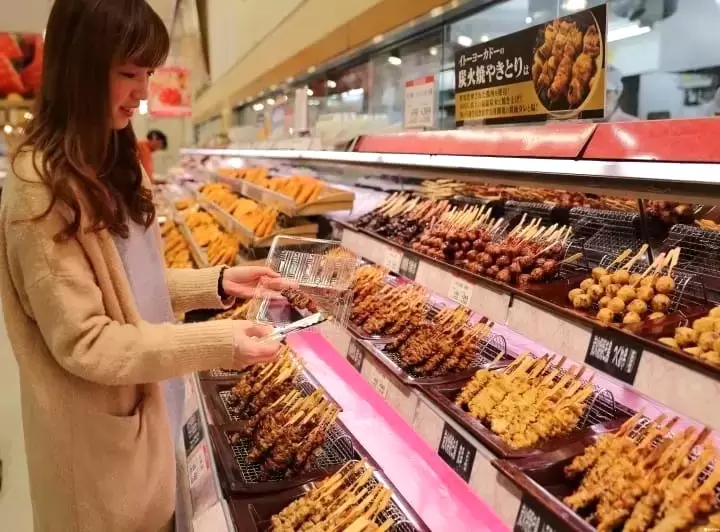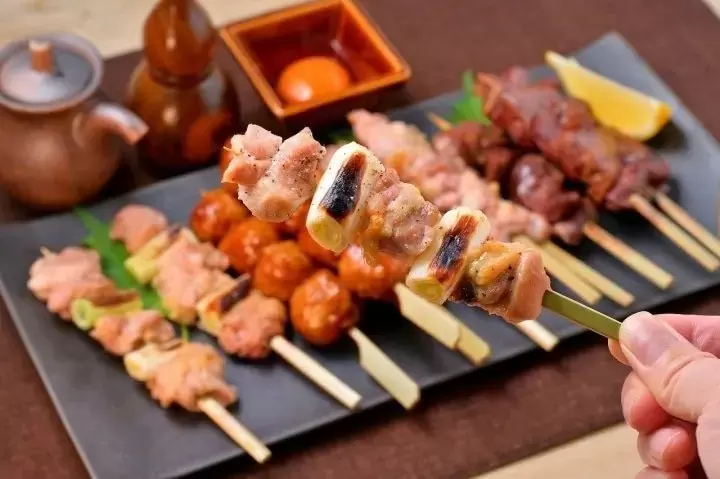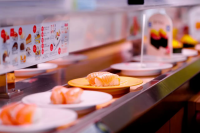Food Prices in Japan: 1,000 Yen Meals and Budget Tips 2025

Learn about the prices of food in Japan for convenience store food, and dishes like sushi, ramen, and fast food. This article introduces the price of an average meal, 1,000 yen meals, and how to save on dining in Japan.
The Average Cost of Meals in Japan
Although transportation and accommodation costs in Japan increased after the pandemic, food prices remained relatively stable. By 2025, many travelers are surprised to find affordable dining options, often cheaper than in their home countries.
Read on to learn about food prices in Japan and what types of meals to choose when traveling on a budget.
Meal Options and Average Prices in Japan
1. Convenience Store Food: Less Than 1,000 Yen
2. Supermarket Take-out Food: Less Than 1,000 Yen
3. Ramen: Around 1,000 Yen
4. Sushi: Around 2,000 Yen for Conveyor Belt Sushi
5. Japanese Wagyu Beef, Yakiniku, and Grilled Cuisine: Around 3,000 Yen
6. Izakaya Bar Food and Drink: Around 3,000 Yen
7. Fast Food Prices in Japan
- Gyudon Beef Bowls and Teishoku Set Meals: 1,000 - 1,500 Yen
- Western Burgers and Fried Chicken Set Meals: Around 1,500 Yen
8. Family Restaurant Meals: 1,500 - 2,000 Yen
For eSIM, choose MATCHA eSIM — for Wi-Fi, go Ninja WiFi!
Read also
1. Convenience Store Food: Less Than 1,000 Yen

Japan has many restaurants, but convenience stores—"conbini"—are even more integral to daily life. The main chains—Seven Eleven, Family Mart, and Lawson—are open 24 hours, allowing you to buy food anytime.
Many products have English labels, and staff in major cities like Tokyo and Osaka often speak some foreign languages.
Convenience stores sell a plethora of meals, snacks, and beverages. You will find onigiri (rice balls), sandwiches, baked goods, bento (boxed lunches), Japanese pasta, udon noodles, salad, and a variety of snack and sweets options.
Convenience stores also have hot meals such as karaage (Japanese fried chicken), steamed buns, and oden (stewed fish and vegetables).
| Food | Average Cost |
| Onigiri (rice ball) | 150 to 200 yen |
| Sandwich | 200 to 500 yen |
| Udon, Soba Noodles, Pasta | 300 to 500 yen |
| Salads and Side Dishes | 200 to 400 yen |
| Hot Foods: Fried Chicken, Steamed Buns, etc. | 150 to 300 yen/piece |
| Beverages and Desserts | 100 to 300 yen |
A convenience store meal typically costs around 700 to 1,000 yen. For multiple items or with a travel partner, the total is usually about 1,500 yen.
With a wide variety of options, conbinis are convenient for breakfast, lunch, dinner, and snacks, so be sure to visit for an affordable meal.
Read also
2. Supermarket Take-out Food: Less Than 1,000 Yen

Every Japanese supermarket has a section with ready-made take-out dishes, including karaage, tonkatsu, yakitori, gyoza, tempura, grilled fish, sushi rolls, okonomiyaki, pizza, and other delicacies. Prices range from 250 to 500 yen per box, making them very affordable.
Bento-style packed meals with rice or noodles, a cutlet, vegetables, and potato salad typically cost between 500 and 700 yen.
These pre-made dishes are usually prepared in-store and have a limited shelf life. Starting around 7:00 PM, their prices often drop by 10% to 50%.
For freshly made, healthy, and tasty meals at a low cost, check the deli section at a supermarket. Major Japanese supermarket chains include Aeon, Ito Yokado, Seiyu, Life, and others.
3. Ramen: Around 1,000 Yen

Picture from 30 Great Tokyo Ramen Shops Selected By A Ramen Expert
There are thousands of ramen restaurants and shops in Japan, from nationwide chains like Ichiran to higher-end ramen restaurants, to tiny, owner-run shops where diners eat standing up.
Ramen is a casual meal in Japan and is priced usually around 600-1,200 yen per bowl. If you add extra toppings, a side dish, and a drink, like beer, you will still likely pay no more than 2,000 yen.
The price of ramen differs by type and, as mentioned above, adding toppings like barbecue pork, eggs, or green onions will increase the bill. Specialty ramen, like vegetarian and vegan options or gluten-free dishes, tends to cost around 1,000 yen without modifications.
A bowl of ramen will satisfy most diners, but if you are especially hungry, it is typical to order a side of gyoza or rice to accompany the ramen. Many restaurants also offer an extra helping of noodles you can add to your soup for 100 or 200 yen.
Read also
4. Sushi Prices: Around 2,000 Yen for Conveyor Belt Sushi

Picture from Pixta
If you're traveling Japan, eating sushi is a must. The availability of delicious, high-quality sushi is incomparable to the sushi offered abroad.
Diners can choose from traditional sushi bars with course meals to a casual conveyor belt restaurant where you can order from an electronic tablet. A sushi meal will cost anywhere from 2,000 yen up to 20,000 yen or more per person, but it depends on the restaurant you go to and when you eat.
For example, lunch at a sushi restaurant will usually be around 2,000 to 3,000 yen for a meal consisting of different sashimi and rolled sushi. If you dine in the evening, dinner can be approximately from5,000 to 20,000 yen or more.
The cheapest option for eating sushi is going to conveyor-belt sushi, or kaiten zushi, which will cost anywhere from 1,500 to 2,500 yen per person, regardless of whether it's for lunch or dinner.
Typical beverages enjoyed with sushi, like Japanese sake and beer, will be priced between 400 to 1,000 yen or more.
Read also
5. Japanese Wagyu Beef, Yakiniku, and Grilled Cuisine: Around 3,000 Yen

Picture from Pixta
Head to a yakiniku or teppanyaki restaurant for Japanese beef (wagyu), grilled food like okonomiyaki, or a hearty meal with drinks.
At most yakiniku restaurants, you first decide the meat of your choice and cook it on the grill before you. The price you pay depends on the type of meat and amount you choose, but it generally averages around 2,000 to 4,000 yen per meal per person. Prices for dinner are a little bit more expensive, ranging from 6,000 to 10,000 yen.
Teppanyaki is food cooked on an iron griddle ("teppan" in Japanese). Teppanyaki restaurants will sometimes have meat to grill. Most have dishes like okonomiyaki (savory pancake from the Kansai region), monjayaki (a savory grilled dish common in Tokyo), and yakisoba on the menu. You will also find seafood at times. When ordering a la carte, you can expect to pay between 1,000 and 2,000 yen per item.
Some of these restaurants will have someone cook the food for you, but at most restaurants, the ingredients are prepared and you will do the cooking for yourself with the iron griddle in front of you.
6. Izakaya Bar Food and Drink: Around 3,000 Yen

Izakaya are Japanese pubs that offer alcohol and side dishes to pair with the drinks. Frequented by office workers on weekday nights and friend groups on weekends, izakaya are very popular evening spots.
When at an izakaya, it's typical to order several side dishes, or otsumami, to enjoy while drinking. Otsumami dishes are usually from 300 to 800 yen. Yakitori (grilled chicken on skewers), fried food, sashimi, and vegetable side dishes like edamame are on a typical izakaya menu. Alcoholic beverages will usually cost between 300 and 600 yen.
Expect to pay 2,000 yen or more for food and drinks at an izakaya. Nationwide chains, like Torikizoku offer most of its items for 328 yen each (before tax) and are a very reasonable option for those who want to save some yen.
Uotamiand Shoya are some more common izakaya chains that offer fair prices on drinks and fare.
Read also
7. Fast Food Prices in Japan
Fast food is another option for dining out in Japan. Diners can choose from chains like Matsuya offering beef rice bowls, Japanese-meets-western burgers at Mos Burger, and international restaurants like McDonald's and Burger King.
These restaurants are casual, have international customer-friendly menus, and can cost less than 1,000 yen per meal.
Gyudon Beef Bowls and Teishoku Set Meals: 1,000 - 1,500 Yen

Picture from Pixta
Gyudon (beef bowl) is considered fast food in Japan. You can try it at Yoshinoya, Matsuya, and Sukiya restaurants located throughout the country. Gyudon is a rice bowl dish topped with salty and sweet beef slices, flavored with soy sauce and sugar.
Prices range by restaurant and location, but a typical bowl costs around 500 yen. You can change the portion size too--a small size is usually 400 yen, and a large will be around 600 yen. If you add miso soup or a side dish, it will be around 150 yen extra.
These chains are often open in the early morning and operate until past midnight, so they are very convenient for breakfast or a late-night meal after a night out.

Picture from Pixta
Another casual option are meal sets known as teishoku. Teishoku are meals served with a main dish (usually meat or fish) with rice, miso soup, and other side dishes like a salad. A teishoku meal costs around 800 to 1,000 yen, so it is a slightly more expensive (but often healthier) choice than the rice bowls mentioned above.
Recommended restaurants include Yayoiken and Ootoya with locations throughout Japan. There are also many individually owned mom-and-pop teishoku shops where you can try food with a home-cooked flavor.
Western Burgers and Fried Chicken Set Meals: Around 1,500 Yen

Mos Burger. Picture from 10 Things You Should Know About Eating Out In Japan
As mentioned above, Japan is home to hundreds of fast food establishments with Western-style options. The most common are McDonald's, Burger King, Lotteria, and Mos Burger for hamburgers. Another popular restaurant is KFC. Prices vary by restaurant, but McDonald's generally has the cheapest options.
| Food | Average Cost |
| McDonald's Value Set (Combo Meal) | up to 750 yen (more for specials) |
| Lotteria Set Meal | up to 1,220 yen |
| Mos Burger Set Meal (Medium) | around 1,000 yen |
| KFC Set Meal | up to 1,200 yen |
Another thing to note is that the menu items of restaurants located in Japan vary significantly from other countries.
For example, at McDonald's teriyaki burgers are a regular menu item and they often offer seasonal items with a Japanese twist like red bean paste pies. Keep an eye out for these regional foods to enjoy the experience even more.
Read also
Family Restaurant Meals: 1,500 - 2,000 Yen

Picture from Pixta
In Japan, there are various relatively low-priced restaurants known as "family restaurants." This term is used as these restaurants provide an environment that is easy for families with children to frequent.
Well-known family restaurants in Japan include Saizeriya, Gusto, Denny's, Jonathan's, and Joyfull. A meal at one of these restaurants will average around 1,000 yen in total per person.
Saizeriya offers mostly Italian-style dishes, like pasta and Japanese pizza. The beverage menu also includes wine, sold for a few hundred yen.
Gusto, Denny's, and other family restaurants in Japan serve western dishes like steak, fried shrimp, salad, and soup. You can also find desserts like parfaits and cakes.
Most a la carte dishes cost between 700 and 900 yen. If you add rice, bread, or a bowl of soup to it, your total should be about 1,500 yen. Diners wanting to stay a while at these restaurants will also order the "drink bar" option, which includes unlimited tea, coffee, and soft drinks from a soda fountain for around 300 to 400 yen.
Read also
Average Food Expense for a Day in Japan
You can enjoy much of Japan's rich food culture for around 1,000 yen per meal. If you have at least 3,000 yen per day to spend on food, you will have enough to eat in terms of volume and taste.
Food costs depend on the restaurants you visit--plan to decide when to splurge on a high-end sushi or yakiniku restaurant, and where you can save by going to the convenience store or choosing other cheaper options.
FAQ
How much does it cost to eat in Japan per day?
The cost of eating in Japan per day can range from 3,500 to 6,000 yen for budget travelers, up to 6,000 to 12,000 yen for mid-range travelers, depending on the dining preferences and the specific region or city. Costs may vary widely based on individual dining habits and the chosen dining establishments.
What is a good budget for a Japan trip?
A good budget for a trip to Japan can range from 7,000 to 10,000 yen per day for budget travelers, 10,000 to 25,000 yen per day for mid-range travelers, and at least 25,000 yen per day for luxury travelers. These estimates cover accommodation, meals, local transportation, activities, and shopping, and can vary based on personal preferences and the specific itinerary.
Do you tip in Japan?
In Japan, tipping is not a common practice and can even be considered rude in some situations. The country holds a strong cultural tradition of providing excellent service as part of the hospitality industry, without the expectation of additional monetary rewards. In fact, offering a tip may lead to confusion or embarrassment for the staff, as the provision of courteous and attentive service is considered a standard part of the job. Therefore, visitors to Japan should refrain from tipping at restaurants, hotels, or other service establishments. Instead, simply expressing gratitude with a polite "arigatou gozaimasu" (thank you) is more than sufficient.
What are 5 table manners in Japan?
Table manners are important in Japanese culture. Here are five key table manners in Japan:
1. Saying "Itadakimasu" Before the Meal: This phrase, often said before a meal, expresses gratitude for the meal that is about to be eaten. It is a polite way to show appreciation for the food.
2. Using Chopsticks: When using chopsticks, it's important to avoid sticking them upright in a bowl of rice, passing food directly from one set of chopsticks to another, or pointing with chopsticks. These actions are considered impolite.
3. Slurping Noodles: Unlike in some other cultures, it's acceptable and even considered a sign of enjoying the meal to slurp noodles loudly when eating them in Japan.
4. Soy Sauce Usage: Pouring soy sauce directly over a bowl of rice or dipping rice into the soy sauce is generally avoided. It's more common to dip the fish or side dishes into the soy sauce.
5. Finishing Food Completely: It's polite and appreciated to finish the entire meal that has been served, as leaving food may be considered wasteful and disrespectful toward the efforts of the cook.
These manners reflect the cultural values of respect, gratitude, and appreciation for both the food and those who have prepared it.
Can I take away unfinished food in Japan?
In Japan, it is not a common practice to request a "doggy bag" or take away unfinished food from a restaurant. Japanese dining culture places great emphasis on finishing the meal while at the establishment. Asking for a container to take away leftover food can be seen as unusual and may not always be accommodated.






























































![[Coupon Available] Attention Overseas Winter Sports Fans! Nagano's Sports Depot Has Evolved](https://resources.matcha-jp.com/resize/720x2000/2026/01/05-254819.webp)
![[2 hours from Tokyo ] 10 Quiet and Breathtaking Views of Mount Fuji in Yamanashi Hokuto City , Yamanashi - Part 2](https://resources.matcha-jp.com/resize/720x2000/2025/12/16-253037.webp)

![[Reopening in March 2026] Ikoma Sanjo Amusement Park Park, 45 minutes from Osaka , with free admission](https://resources.matcha-jp.com/resize/720x2000/2024/08/28-194409.webp)